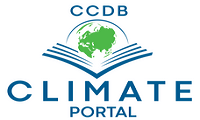Climate-Induced Displacement and Migration: Policy Gaps and Policy Alternative

The causes and consequences of climate- induced displacement and migration involve complex and multidimensional aspects; firstly, climate-induced disasters and their long-term residual impacts act both as visible and invisible drivers of migration, secondly, variation in climatic factors has a direct influence on conflicts that again force people to flee away from the conflict-prone areas, thirdly, climate-induced migrants essentially face violation, denial and abuse of human rights during their mobility within national jurisdiction and while crossing international boundary.
The aspects of climate-induced displacement and migration stated above involve two different dimensions; a) cause dimension e.g. climate related disaster events and their residual impacts, and b) consequence dimension e.g. socio-economic deprivation and violation of human rights etc. However, the recent policy discussion emphasizes only on the ’cause dimension’ putting more responsibility to the national government to address the crisis. On the other hand, the consequence of climate-induced migration, especially in the case of cross-border migration, is less discussed as it bears implication to the international laws and policies and demands a new protection measure for the future wave of climate migrants. Climate- induced migrants neither qualify criteria under Refugee Convention 1951, nor fully protected by Guiding Principles on Internal Displacement as this is not legally binding and designed to apply forcibly displaced people by natural and human made disasters inside their own country.
Considering climate-induced displacement and migration as a pressing global issue, this policy paper analyses the causes and consequences of forced displacement and migration, analyses existing protection mechanisms both in national and international level and argues for a new Legal Protocol under the UNFCCC for a long-term rights-based solution of the crisis.
This briefing paper proposes six elements to be considered to the Protocol; they are; a) addressing causes of displacement and migration (both sudden and slow onset events) with a clear guideline in ‘Global Adaptation Goal’ and National Adaptation Plan with the provision of certain percentage of resources directly to the climate vulnerable communities, b) clear indication and guideline on State activities for undertaking long-term relocation strategy within the country through social empowerment and economic capacity building, c) State protection mechanism (social safety nets) and support services for the people trapped in the risky hotspots and urban slums, d) human rights based protection for the climate induced internal and cross-border migrants, and trapped population e) provision for ‘ex situ’ adaptation (adaptation beyond boundaries) with of full fundamental rights as per constitution of the host country and f) provision for ‘entire community’ migration, especially for the sinking island nations who are under threat of forced eviction by the impacts of climate change such as sea level rise.
The suggested elements to the Protocol may open space for further discussion in developing a rights-based Protocol for addressing climate induced displacement and migration.
- Publisher: The Center for Participatory Research and Development (CPRD) Download

